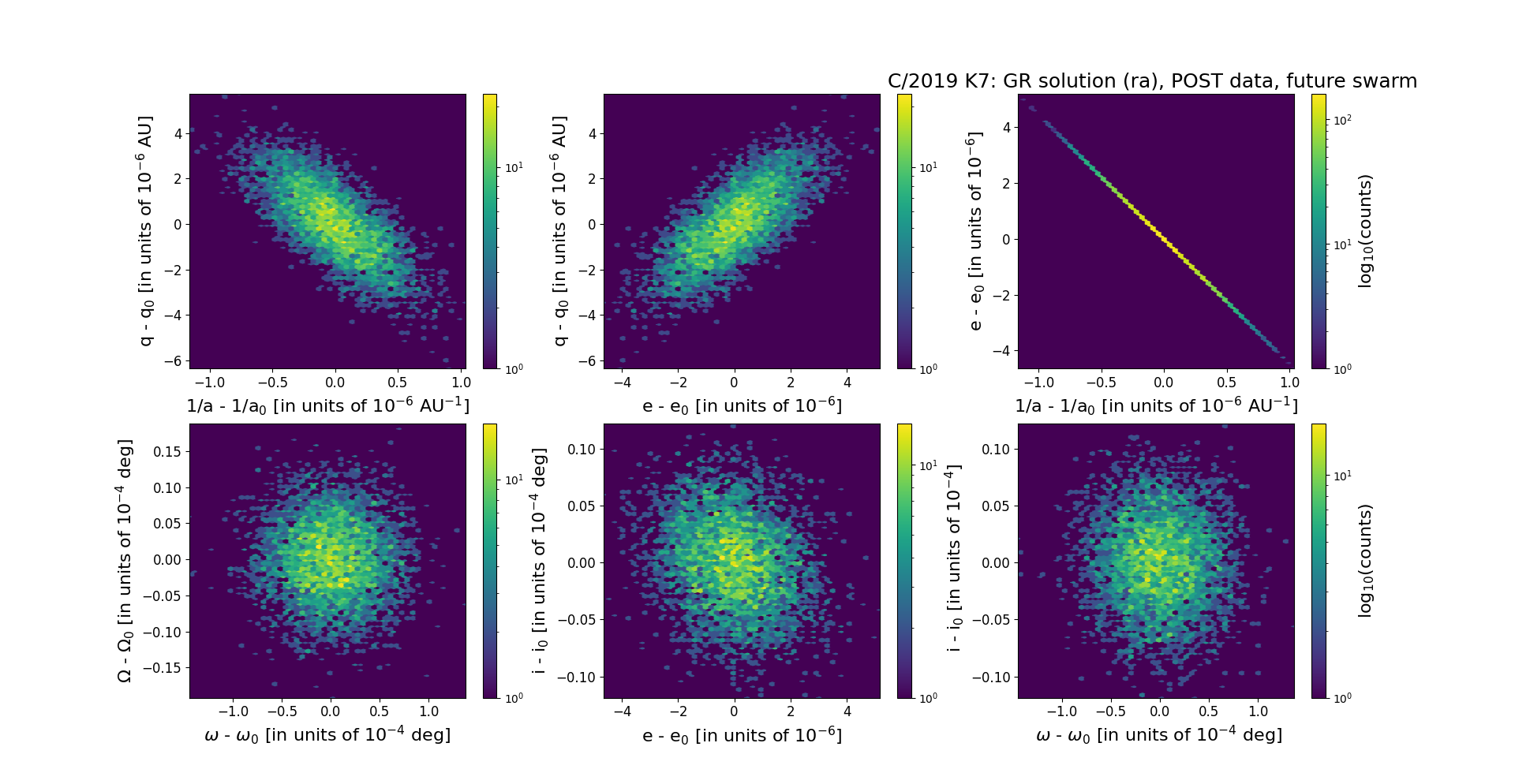C/2019 K7 Smith
more info
Comet C/2019 K7 was discovered on 30 May 2019, more than one year before its perihelion passage. Later a few pre-discovery observations were found from 8 and 9 October 2017. In the moment of orbit determination, this comet was still observed.
Solutions (GR and NG) given here span over 5.49 yr in a range of heliocentric distances: 8.64 au – 4.48 au (perihelion) – 9.2 au; orbits based on pre-perihelion and post-perihelion data independently were also obtained.
This Oort spike comet suffers moderate planetary perturbations during its passage through the planetary system that lead to a more tight future orbit (see future barycentric orbit).
Solutions (GR and NG) given here span over 5.49 yr in a range of heliocentric distances: 8.64 au – 4.48 au (perihelion) – 9.2 au; orbits based on pre-perihelion and post-perihelion data independently were also obtained.
This Oort spike comet suffers moderate planetary perturbations during its passage through the planetary system that lead to a more tight future orbit (see future barycentric orbit).
| solution description | ||
|---|---|---|
| number of observations | 2114 | |
| data interval | 2020 06 18 – 2023 06 03 | |
| data arc selection | data generally limited to post-perihelion (POS) | |
| range of heliocentric distances | 4.48 au – 9.2au | |
| detectability of NG effects in the comet's motion | comet with determinable NG~orbit | |
| type of model of motion | GR - gravitational orbit | |
| data weighting | YES | |
| number of residuals | 4156 | |
| RMS [arcseconds] | 0.41 | |
| orbit quality class | 1a+ | |
| orbital elements (barycentric ecliptic J2000) | ||
|---|---|---|
| Epoch | 2329 05 12 | |
| perihelion date | 2020 06 15.69174659 | ± 0.00022845 |
| perihelion distance [au] | 4.46871681 | ± 0.00000154 |
| eccentricity | 0.99823204 | ± 0.00000137 |
| argument of perihelion [°] | 27.197423 | ± 0.000035 |
| ascending node [°] | 307.986171 | ± 0.000005 |
| inclination [°] | 103.568742 | ± 0.000004 |
| reciprocal semi-major axis [10-6 au-1] | 395.63 | ± 0.31 |
| file containing 5001 VCs swarm |
|---|
| 2019k7ra.bpl |
